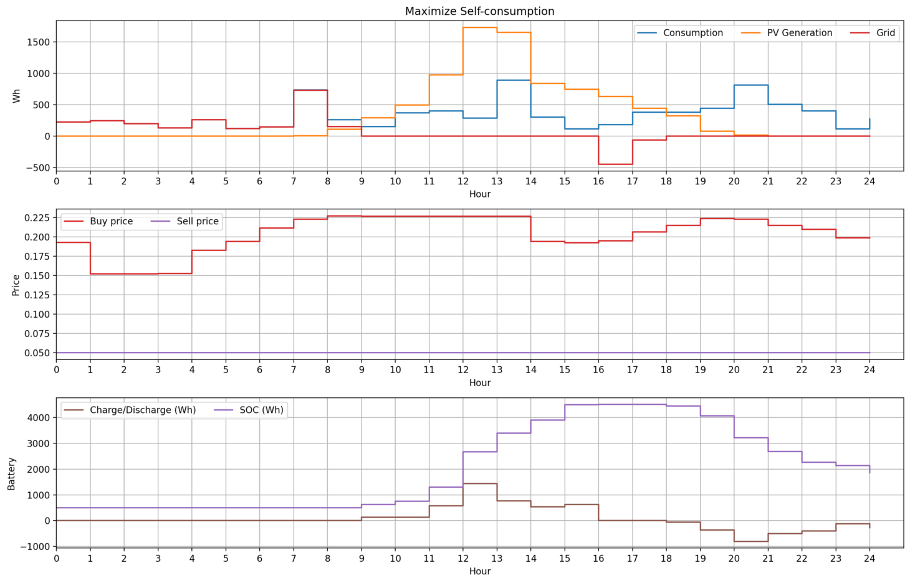At present, solar power plants are dominating the market, with the electricity they generate being used directly by households and the excess energy diverted to the electricity grid. However, due to these solar power plants, electricity grids are becoming increasingly overloaded.
According to the CEO of Energy Networks Australia, Andrew Dillon, “If too much energy is fed back into the grid in the middle of the day, it could cause frequency and voltage disturbances in the system, which could lead to transformers tripping off to protect themselves from being damaged, thereby causing localised blackouts.”
Therefore, the Czech Republic and the Netherlands, among other countries, have plans in place to prevent people from transferring excess energy to the electricity grid. It is predicted that other countries will follow suit. As a consequence, those who operate solar power plants are, and will increasing be, wondering what to do with the solar electricity that is produced.
A smart battery is a solution that will help direct the electricity generated by a solar power plant during the day into the battery, to use it in the evening. This concept makes it possible to protect the electricity grid and to expand the use of solar power plants even more quickly.
Smart batteries are currently available on the market in capacities ranging from 1.2kWh to 13.5kWh. It is estimated that they can operate successfully for up to 10 years.
Smartphone batteries will be more widely adapted
After years of testing, Inion Software has developed different battery management algorithms for a team of scientists, which allow for wider and more efficient use of batteries. In our view, a battery should not only be able to store electricity, but also buy it from the grid or sell it.
The algorithms developed accurately predict the behavior of human electricity consumption, as well as the load of the electricity grid, price of electricity, work of a solar power plant, and the lifetime of a battery. With all the information available to the battery, the best outcome is that the customer will pay less for electricity. Here are five battery management scenarios that the algorithms deal with:
- The cost minimization scenario is used to minimize electricity bills. This scenario can be used to have fixed tariffs or dynamic market electricity prices. In this scenario, the battery is charged not only from PV generation, but also from the grid. In the case of a dynamic market price, the lowest electricity price is estimated, and batteries are charged according to forecasted generation.
- The self-consumption scenario is used to maximize the use of PV-generated energy. The task in this scenario is to use all the PV-generated energy and have zero generation going to the grid. This scenario is useful when the feed-in tariff is very low, or no feed-in tariff exists at all.
- The peak shaving scenario is used when there is a limit on the user power consumption. If the user starts using more when the limit is set, they must pay a very high price for the electricity. In this case, a battery is used to cut the consumption peaks by supplying energy when there is a higher demand than allowed. This scenario should be popular for industrial applications.
- The self-sufficient scenario is used to reduce consumption from the grid. This case can be used for the net zero buildings concept, when a building requires an independent supply.
- The curtailment scenario is used when there is the feed-in limit of the generated energy. In this scenario, surplus PV energy is stored in the battery and used in the evening and early morning hours.
Examples of different scenarios:
- (a) Minimize cost
- (b) Maximize Self-consumption
The different scenarios described above allow for a wider application of the batteries. This not only makes it possible to further expand the construction of solar power plants, and thus protect the electricity grid, but also to ensure people and businesses are paying even less for electricity. Our tests have shown that a smart battery can reduce electricity prices by up to 25%.
If a battery permits the charging and discharging of energy, it is possible to make practically any battery smart. The most important thing is the algorithm that controls the battery.
About the author
Dr. Sarunas Stanaitis the CEO of Inion Software. Over 15 years of experience in B2B sales, product management, marketing, and project management. Inion Software is a company developing a solar power plant monitoring platform and energy management system for battery management in one place.
The views and opinions expressed in this article are the author’s own, and do not necessarily reflect those held by pv magazine.
This content is protected by copyright and may not be reused. If you want to cooperate with us and would like to reuse some of our content, please contact: editors@pv-magazine.com.





An excellent idea and solution, the expansion of the scenario in the combination of thermal energy and mechanical storage will complete the savings costs.
why not use surplus day-solar- power in generation of hydrogen fuel…
An obvious additional smart battery scenario needs to include the ability to provide a self-sufficient electricity supply (or a key load supply) on occasion of the loss of grid supply due to a network disruption event or a future load shedding situation arising from a market supply shortage. This feature needs to include the requirement to switch off/isolate the the normal electricity supply before switching over to the smart battery supply – which should include appropriate overload and low voltage electrical protection.
Informative post! This is a great share thank you.
This is great concept. However, in order to be green end 2 end, I would like to remind everyone to have in mind the complete life of a battery – production process and end of life especially. When we will be able to have storage that is renewable/re-useable, then, in my opinion, we will have the full circle in sustainable energy systems.